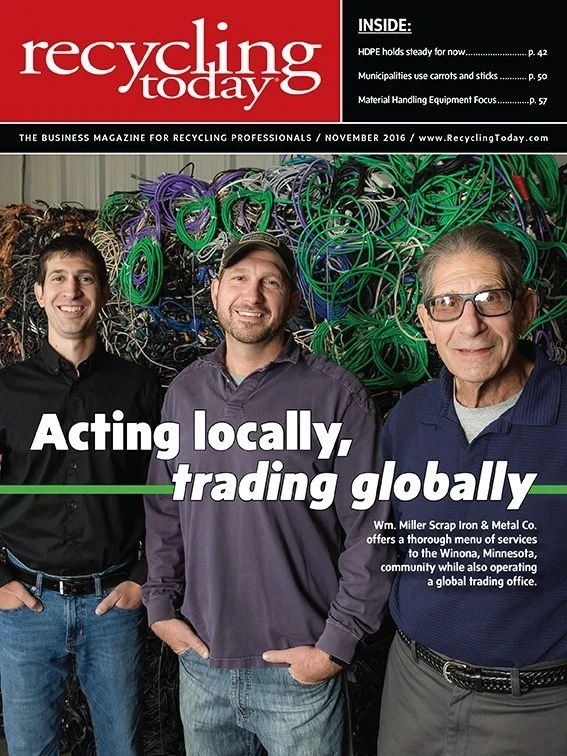Recycled plastics markets are trending upward as October draws to a close, with Jason Stephens of the brokerage company BlackBridge Investments, New York, saying the market is up overall year over year.
However, he adds, “Much of these advances came over the summer months, and we may see decreased demand as we approach planned maintenance and the holidays at a lot of the plants around the country.”

Looking more closely at the individual categories of postconsumer plastics, the markets are more inconstant.
Supply of postconsumer polyethylene terephthalate (PET) has increased over the last three months. “This was mostly due to the summer months as well as [to] the decreased demand for bottles. The bigger end users overbought, and it restricted their purchasing power,” Stephens says. “This left a lot of supply on the market,” which has suppressed pricing.
He adds that demand for recycled PET also is weak in part because of an oversupply of virgin material, which is available at lower prices than recycled material in some cases.
Generation of postconsumer high-density polyethylene (HDPE) bottles, both mixed color and natural, and mixed plastic bottles was steady over the last three months, Stephens says. However, since the closure of plastic recovery facility (PRF) operator Entropex, Sarnia, Ontario, Canada, a glut of unused No. 3 through No. 7 material remains on the market. “It will take time to balance,” he says of the situation, “but pricing has been very suppressed due to the unused supply on the market.”
Stephens adds, “Some MRFs (material recovery facilities) are making PP (polypropylene) bales instead of Nos. 3-7 due to the price drop in mixed bales.”
HDPE bottle bales, on the other hand, have seen an increase in demand and pricing recently, sources say. Ed Handy, general manager of Plastic Revolutions, Reidsville, North Carolina, says pricing spiked “drastically” in October, gaining 20 to 25 percent. “It was unsettling,” he says of the increase in postconsumer HDPE bale pricing, “because we can’t get the price on our end product up.”
Scott Saunders, general manager of the recycling division of KW Plastics, Troy, Alabama, describes HDPE bottle bale supply and pricing as having been largely stable in 2016.
“HDPE prices really have not fallen to the lows of PET, paper or metals,” he says. “They have stayed in the normal trading range, just on the lower side of that.”
Exports of postconsumer and postindustrial plastics for reprocessing have been reduced in light of the strong U.S. dollar, Stephens says.
“When the U.S. dollar is strong, it makes it very expensive for foreign customers to purchase U.S. scrap material,” he continues. “The lack of foreign demand results in the material sitting on the U.S. market and increasing the available supply.”
Stephens remains optimistic about recycled plastics markets, however, saying that year over year “the market is up, so the trend is going in the right direction.”

Explore the November 2016 Issue
Check out more from this issue and find your next story to read.
Latest from Recycling Today
- Orion ramping up Rocky Mountain Steel rail line
- Proposed bill would provide ‘regulatory clarity’ for chemical recycling
- Alberta Ag-Plastic pilot program continues, expands with renewed funding
- ReMA urges open intra-North American scrap trade
- Axium awarded by regional organization
- Update: China to introduce steel export quotas
- Thyssenkrupp idles capacity in Europe
- Phoenix Technologies closes Ohio rPET facility





